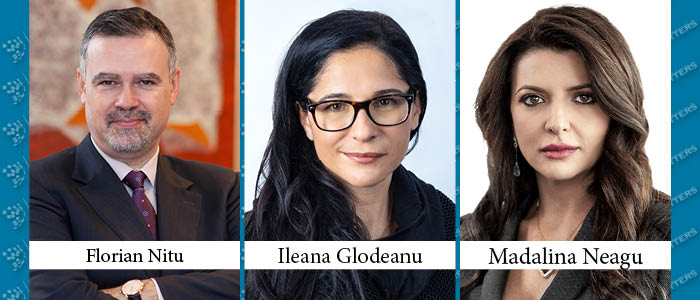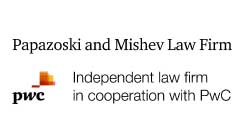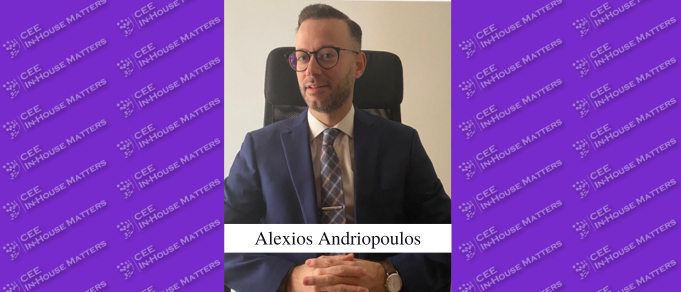With most of Europe facing turbulent times, Romanian markets are experiencing vibrant PE fund activity across a wide plethora of sectors. Popovici Nitu Stoica and Asociatii Managing Partner Florian Nitu, Wolf Theiss Partner Ileana Glodeanu, and Schoenherr Partner Madalina Neagu take a deep dive into the markets and their drivers.
Exciting Sectors Everywhere
“We’re experiencing a renewed and solid interest in the industrial and manufacturing sectors,” Nitu says, stressing that this is “true for almost all manufactured product and industrial markets. Food is also an area where a lot is going on, horizontally and vertically.” He also reports that the electricity, oil, and gas markets are going through a period of turmoil, with “distribution and supply businesses under huge stress, and divestment and exit decisions in the making, or already under implementation. Beyond renewables – which are generally selling forward – energy sector M&A projects are driven by consolidation.”
According to Glodeanu, “strategies could not be more varied than the times we live in. We see that software outpaced other sectors in deal volume growth and, generally, technology has been a driver for many transactions recently.” She explains that “in Romania, attractive targets in this space are IT outsourcing companies with stable and highly skilled teams, having western clients with healthy margins and activity in safe industries.” In addition to IT, she stresses that “renewables, charging stations, and ESG-friendly businesses are in big demand,” as well as “the healthcare and food sectors.”
To boot, the number of PE funds that are active in Romania seems to have grown, Neagu reports, “despite certain investment firms having fully exited the country.” She agrees with Glodeanu and Nitu, saying that these funds are putting a “stronger focus on sectors such as IT, technology, medical services, and B2B services.”
A More Cautious Market
Looking back, the situation seems to have changed somewhat over the past two years. “Equity cost changed dramatically,” Nitu says. “Key institutional players adopt a more prudent approach, while leveraged M&A suffers because of financing costs affecting the economic fundamentals of most of the envisaged transactions. The M&A sector is increasingly marked by the moves of strategic investors in the mid-transactions market, while funds remain active in megadeals, with a high appetite for workouts and businesses conglomerate deals,” he explains.
Glodeanu reports that, on the “fundraising front, many teams are in the run to grab a piece of the EUR 400 million funding to be allocated to PE/VC and infrastructure funds via the resilience and reconstruction plans. Some PE teams disintegrated, and new alliances were formed. But I don’t envy PEs, as it is not easy to raise money in Romania, or the whole CEE region, these days.” According to her, the “key to success in fundraising is having access to private money and, for our region, this is a real challenge. Moreover, it is pretty difficult to finance (on top of equity), and it can be even more challenging to find good targets to invest in, although both sponsors and strategics have enormous pools of capital to deploy.”
“The current market environment poses a range of significant challenges, calling for a higher capacity of the investors to adapt, anticipate, and find creative ways of navigating uncharted territories,” Neagu says. As she puts it, “history suggests that it is the deal done in a downturn that generates superior rates over time, and this is what fuels the dealmaking in times like today.”
Specifically, Neagu explains that due diligence processes have become “more complex and are more focused on risk mitigation. Buyers seek to understand how equipped targets are to deal with various (including macro) uncertainties and how compliant they are with legal requirements. In contractual terms, this has translated into enhanced protection of the buyer through more complex representation and warranties, covering actual concerns such as cybersecurity threats, compliance, ESG, and the protection of human rights,” she explains.
In addition, Neagu says that pricing has also experienced a shift towards more “conservative approaches of earn-outs and other forms of payment deferrals.” According to her, there is an increase in competitive sale processes, “as targets that have already proven resilience attract the attention of multiple investors.”
ESG Changed Everything
“The ESG standard is by now an essential consideration in virtually all large and medium-size transactions,” Nitu says. “It is not only a due diligence imperative but, in many cases, an inherent condition for doing business. ESG standardization is indeed taking place not only in terms of processes but ultimately at the businesses’ DNA level.”
Agreeing with Nitu, Glodeanu notes: “as investors become more focused on sustainability and long-term value creation, companies that prioritize ESG factors are increasingly seen as more attractive investment opportunities.” According to her, this is primarily the case in the “technology, energy, and manufacturing sectors, where issues such as data privacy, algorithmic bias, climate change, and board and workforce diversity are becoming more prominent concerns. Romanian companies have started to focus on developing ethical and responsible solutions in their businesses.” Glodeanu reports that the Romanian Association of Asset Managers has developed a set of ESG principles that its members are encouraged to follow, focusing on “investment processes, engaging with companies on ESG issues, and reporting on ESG performance.”
Neagu agrees with both, saying that “environmental and labor, anti-bribery and corruption, and anti-money laundering warranties are already present in many transaction documents, and investors have taken an even more cautious approach in expanding their scope to cater for ESG requirements.”
Doing Better Than Most
Looking ahead, Nitu says that “companies’ access to business development and expansion finance are likely to favor the PE funds that are more flexible in advancing expansion money into their investee targets. Flexibility and investment structures, ahead of the traditional PE fund offerings, will give an edge in a market that is not only competitive but also marked by carefulness,” he underlines.
“I believe the unprecedented current levels of financial sponsor dry powder, in parallel with well-capitalized strategic buyers, and the reversion to ‘normalized’ valuations – placed into the context where Romania has been a clear outperformer for the CEE region – should be good sources of deal optimism for us in the upcoming months,” Glodeanu posits. “While the last two quarters may not have been pleasant globally, sadly, so it could go over the next two quarters. Investors’ moods seem gloomy and overall perception would seem to indicate that CEE has dropped and will continue to drop on the investment radar.”
Still, Glodeanu believes that “digital transformation will remain a global imperative, with business automation services, industrial tech, and AI constituting an opportunity for many deals. Healthcare and clean energy will also succeed in attracting equity for PE fund bolt-ons.”
Finally, Neagu says “the geopolitical situation, the mounting inflation and recession risks, and the real economy slowdown are just a few of the market trends through which PE funds are navigating nowadays, and those may take a toll on their fundraising plans in the near future.” Still, Neagu has a positive outlook, concluding that there are “plenty of investment opportunities and PE funds are among the most knowledgeable players when it comes to navigating through the current climate.”
This article was originally published in Issue 10.4 of the CEE Legal Matters Magazine. If you would like to receive a hard copy of the magazine, you can subscribe here.






















